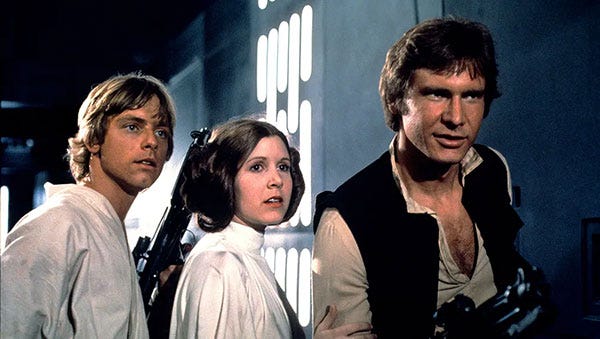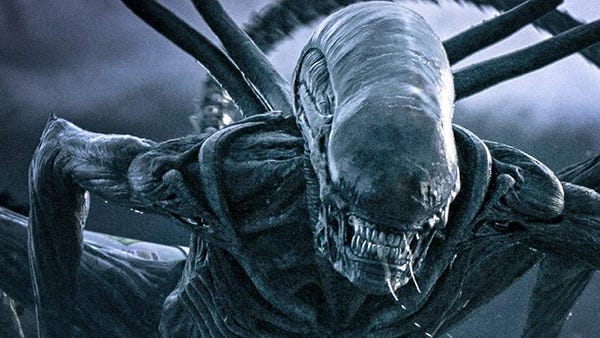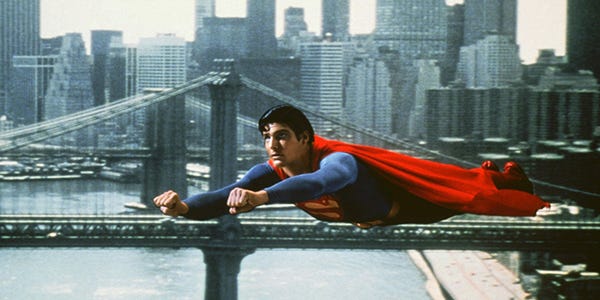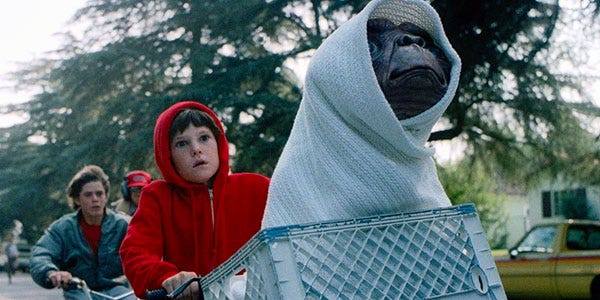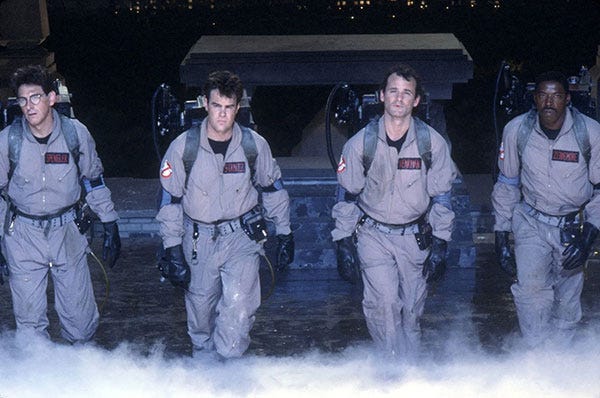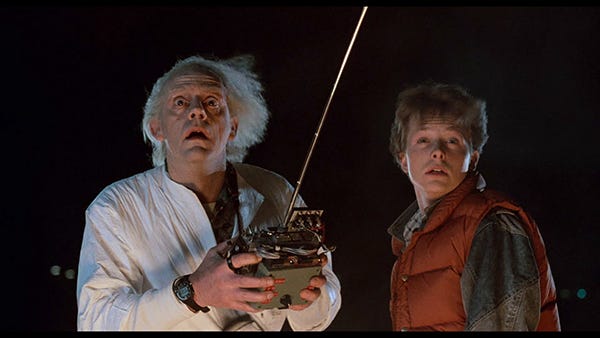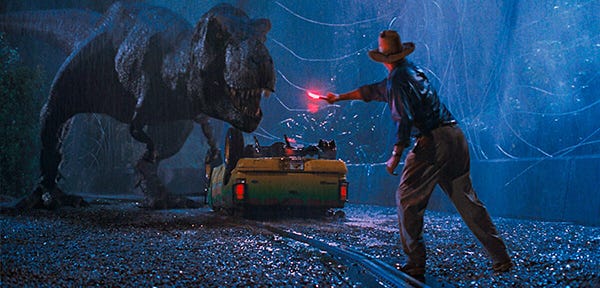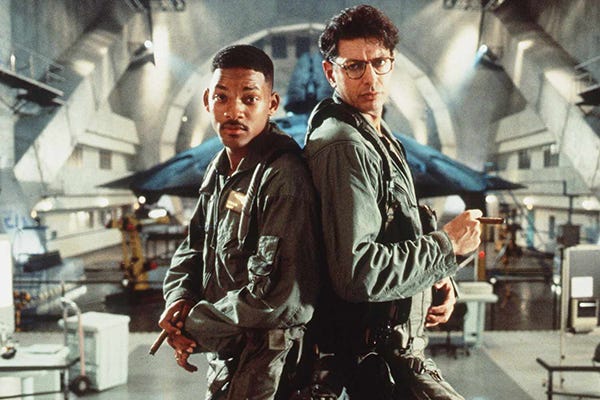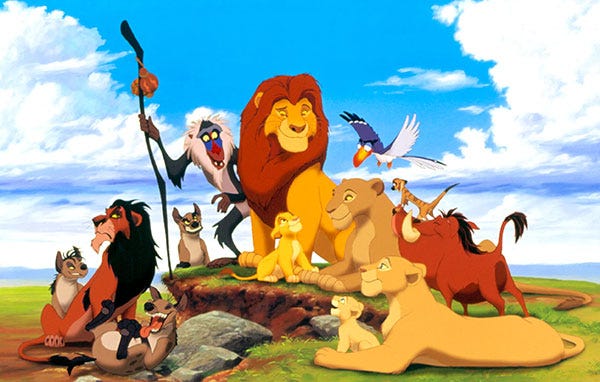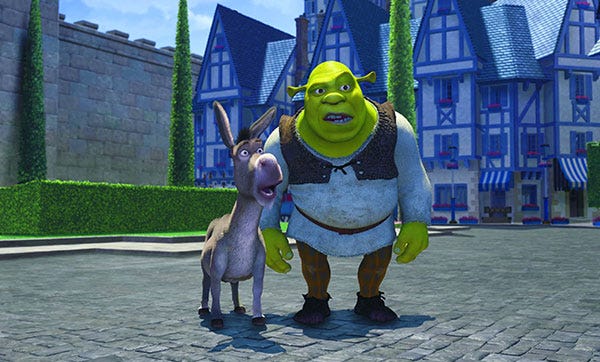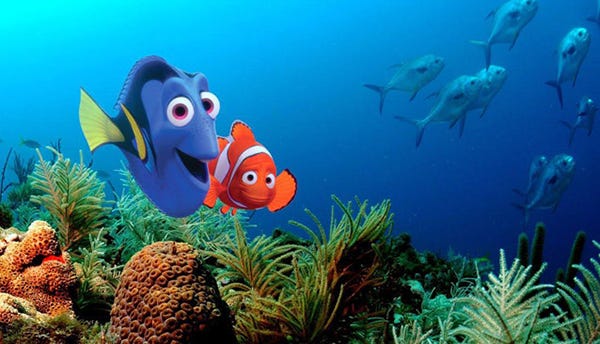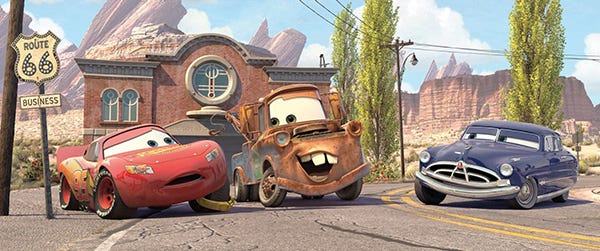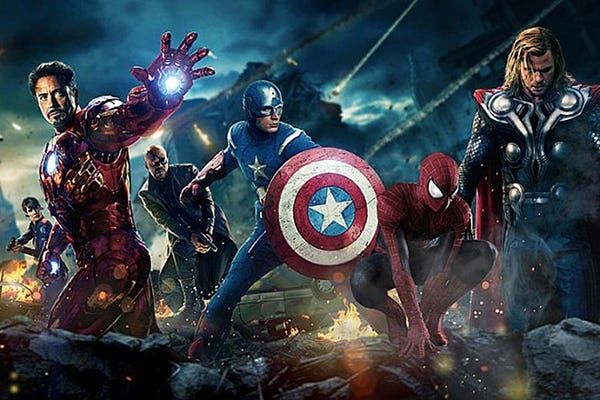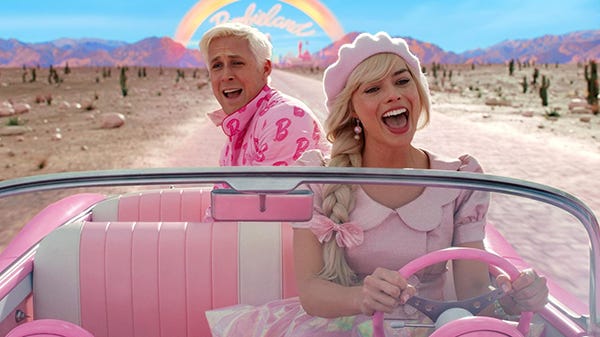From Jaws to Barbie: The Evolution of the Summer Blockbuster Movie
A history of a cultural phenomenon
In the scorching warmer months when you’re ready to cool off inside, nothing beats gathering a few of your friends and family and heading to the movies. Of course, we love going to the theater to experience films on the big screen with others year-round, but there’s something very special about a summer blockbuster. It’s when the filmmakers and franchises we love bring their A-game, the actors and actresses we admire perform their biggest, iconic roles, and the popcorn buckets and merch are spectacular. We’re looking back at the history of the summer blockbuster: how did it become a thing? And what kinds of movies have been perfect for summer viewing–and big box office attendance–over time? This is by no means a complete list, but we’d love to hear your favorites in the comments!
The First Blockbusters
Jaws (1975)
Did you know? The modern summer blockbuster was born on June 20, 1975 with the release of Jaws, directed by Steven Spielberg. As detailed in the new documentary, Jaws @ 50: the Definitive Inside Story, it was one of the most difficult films to make, and Spielberg himself thought it would end his career. Bruce, the life-sized animatronic shark used for filming, broke, holding up production. Filming on the water proved nearly impossible for so many reasons. The technological feats and the filmmakers’ dedication to getting everything completely right put the film over budget and over time–by a lot. If it failed, it would have been a catastrophic loss.
But Jaws had something that films before it didn’t have: a high-concept premise based on the novel of the same name, a wide release strategy, national TV ads, and truly gripping suspense that was enough to keep beachgoers out of the water indefinitely. It was a massive success, and Jaws redefined how films were marketed and when they were released, setting the stage for the modern big summer movie rollout. Limited, slow theatrical releases were common at the time, but Jaws opened wide and created a national event—ushering in a new era where summer became the prime season for big-budget, crowd-pleasing films that everyone had to see right now.
Star Wars (1977)
This new wide film-release and marketing model was solidified two years later with Star Wars which released on May 25, 1977. The film mixed space opera, mythology, and groundbreaking special effects visuals that captivated audiences. The cultural impact was felt with long lines at theaters, repeat viewings, and massive cross-generational appeal. In addition, Star Wars pioneered the idea of franchising and merchandising. Today, die hard fans still collect merchandise, visit theme parks, and consume everything related to the original material. By the end of its initial run, it had grossed over $775 million worldwide, and the franchise continues to grow.
New Genres: Psychological Thrillers and Superheroes
Alien (1979)
By 1979, it was clear that sci-fi, action, adventure, and suspense were perfect summer blockbuster fare. Ridley Scott’s Alien took these genres to the next level with a movie that blended horror, sci-fi, and psychological thriller–a more atmospheric experience than previous big summer movies. As Alien hit theaters on May 25, 1979, its success helped redefine what could work for audiences in summer. Action-packed spectacles were great, of course–but intense genre films with distinctive tone and artistry, as well as critical appeal, could dominate too. Alien grossed over $100 million worldwide on a modest budget, launching a franchise that presently continues.
Superman II (1981)
Alien brought horror and suspense, but in 1981 audiences were ready for their first superhero blockbuster. While the original Superman: The Movie film starring Christopher Reeve (December 1978) was decidedly not a summer blockbuster, Superman II was released on June 19, 1981 and delivered everything a summer audience craved: high-stakes action, emotional drama, and superpowered spectacle. Superman II solidified Superman’s place as a cinematic icon and helped define what audiences would come to expect from superhero movies released during the summer blockbuster season. To this day, the biggest superhero movies are often released in the summer, a trend that has built over the past five decades.
Bring the Kids: Summer Blockbusters for the Family
E.T. the Extra-Terrestrial (1982)
In the 1980s, films released in the summer were also geared towards kids and family viewing. Spielberg returned with E.T. the Extra-Terrestrial released on June 11, 1982. One of the most beloved and successful blockbusters of all time, its kid-friendly plot told a heartfelt story of friendship between a young boy and a stranded alien, blending science fiction with deep emotional resonance. This Spielberg film captivated audiences with its warmth, wonder, and innocence as it asked every viewer to see the friendship between E.T. and protagonist Elliott through their eyes. It became a box office phenomenon, earning nearly $800 million worldwide and holding the title of highest-grossing film of all time (Spielberg’s Jurassic Park would break that record in 1993).
Ghostbusters (1984)
If E.T. proved that emotional storytelling could dominate the season just as powerfully as spectacle, Ghostbusters proved that comedy could as well. Released on June 8, 1984, the film blended comedy, science fiction, and supernatural thrills into a wildly original and crowd-pleasing hit. Ghostbusters delivered big laughs, cutting-edge special effects, and an undeniably catchy theme song. Its mix of genre, humor, and spectacle made it a perfect summer movie, turning it into a pop culture phenomenon and spawning a lasting franchise. Ghostbusters was the top-grossing comedy of the decade, earning nearly $300 million worldwide.
Back to the Future (1985)
Ghostbusters proved that comedy and sci-fi is a winning combo, and Back to the Future followed suit. Released on July 3, 1985, and directed by Robert Zemeckis, the film starred Michael J. Fox as teenager Marty McFly, who accidentally travels back to 1955 in a time-traveling DeLorean invented by the eccentric Doc Brown played by Christopher Lloyd. Back to the Future was for all audiences, and was the highest-grossing film of 1985. It’s a cultural touchstone that is endlessly rewatchable, thanks to its sharp script and charismatic cast, and its sequels are just as powerful.
Existential Thrillers and World-Ending Drama
Jurassic Park (1993)
Name a place where it feels ok to contemplate the existential questions of humanity and our world? We think it’s in a dark room, holding a giant bucket of popcorn, drinking a large sugary soda, with the air-conditioning blasting. One of the most iconic films about how science and humanity converge, Steven Spielberg’s Jurassic Park, was released right in time for summer on June 11, 1993. This thriller combined cutting-edge visual effects and use of animatronics and CGI, suspenseful storytelling, and awe-inspiring spectacle to bring dinosaurs to life like never before. Michael Crichton’s novel, Jurassic Park, captivated audiences as it asked the question: could we bring back dinosaurs from extinction with a bit of science, a lot of money and even more audacity to make a fortune doing it? And if we could, should we? This existential question lingers over the movie adaptation of the book as terrifying dinosaurs terrorize a small party. Jurassic Park was the highest-grossing film of all time at its release, earning over $900 million worldwide (later surpassing $1 billion with re-releases). The franchise continues to make films related to the original.
Independence Day (1996)
Nothing says existential threat like an alien invasion! Independence Day, released on July 3, 1996, combined large-scale disaster spectacle, alien invasion thrills, and patriotic heroism (naturally). The film’s action epitomized 1990s event cinema—high-concept, effects-driven—and helped cement July 4th as a prime date for major movie releases. With its iconic massive destruction scenes like nobody had ever seen before and memorable one-liners, Independence Day was a massive box office hit, earning over $800 million worldwide, and launched Will Smith as a summer movie star.
Armageddon (1998)
If it’s not space aliens showing up in your backyard, it’s a deadly asteroid that threatens all of life on Earth. Armageddon, released on July 1, 1998 follows a team of oil drillers sent into space to stop a massive asteroid from colliding with our planet. The high-stakes disaster premise, emotional drama, and explosive action delivered over-the-top spectacle, and more patriotic themes (we’re sensing a theme here). In addition to the appeal of the film on its own, Aerosmith’s hit song “I Don’t Want to Miss a Thing” was the theme song marketed to millions and got a huge amount of play on the radio. The film was a major box office success, earning over $550 million worldwide.
From Animatronics to Animated
The Lion King (1994)
Animated films are a huge piece of the summer blockbuster pie. The Lion King, released on June 24, 1994, was a beloved animated summer blockbuster and its legacy prevails with live action remakes, a long-running Broadway show, and massive merchandising. The Disney animated film redefined the idea of a long-form cartoon movie: stunning animation, powerful storytelling, and a memorable soundtrack by Elton John and Hans Zimmer came together to create one of the most lasting stories of all time. The Lion King captivated audiences of all ages with its emotional depth and epic scale. It became a massive box office hit, earning over $950 million worldwide, and held the record for highest-grossing animated film for years.
Shrek (2001)
Shrek, a groundbreaking animated film, redefined fairy tales with its irreverent humor, pop culture references, and heart. Released on May 18, 2001, the film followed the unlikely hero Shrek, a grumpy ogre who embarks on a quest that turns traditional fairy tale tropes upside down. This film stood out for its appeal to both kids and adults, its cutting-edge CGI animation, and its subversive take on classic stories. It launched a beloved, massively successful franchise and helped establish DreamWorks as a major player in animation. With characters voiced by Mike Myers, Eddie Murphy, and Cameron Diaz, Shrek earned over $480 million worldwide and was the first winner of the Academy Award for Best Animated Feature.
Finding Nemo (2003)
Pixar’s Finding Nemo, released on May 30, 2003, combined heartwarming storytelling, humor, and stunning underwater animation. At its heart, it’s a story about fatherhood and the importance of finding one’s independence. Marlin, a clownfish, journeys across the ocean to find his lost son, Nemo, with help from the forgetful but lovable Dory. The film was instantly iconic, and a massive hit, earning over $940 million worldwide. It was Pixar’s highest-grossing film at the time and one of the biggest animated hits of the decade.
Cars (2006)
A road trip is a quintessential summer activity, and therefore a road trip makes a great setting for a summer blockbuster movie. But what if the road trip wasn’t for people, but the cars themselves? In the mid-2000s, Pixar truly outdid themselves with Cars, released on June 9, 2006. Lightning McQueen, a hotshot race car, finds unexpected friendship and humility in a forgotten desert town on his way to a championship race. A remarkably relatable story for all ages, it combined nostalgic tones of Americana, Route 66, and the great expanse of the American landscape with high-speed excitement and action. The film earned over $460 million worldwide and launched a massive merchandising empire, expanding into a full franchise with sequels, spin-offs, and theme park attractions. Walt Disney World recently announced a Cars world expansion in their flagship Magic Kingdom Theme Park.
Franchise Dominance
Big brands with built in fans are almost always a surefire bet for a summer blockbuster movie. In recent years, the Marvel Cinematic Universe (MCU) has become synonymous with the modern summer blockbuster, consistently delivering action-packed, crowd-pleasing films that dominate the box office. Starting with Iron Man in May 2008, Marvel Studios strategically released many of its biggest titles from May through August, shaping the summer movie landscape for over a decade.
These films combined superhero spectacle, humor, interconnected storytelling, and strong character arcs to draw massive global audiences. Summer MCU hits include: Iron Man (2008), The Avengers (2012), Guardians of the Galaxy (2014), Spider-Man: Homecoming (2017), Far From Home (2019), Avengers: Infinity War (2018) and Endgame (April 2019). MCU films set new standards for franchise building, event movie marketing including incredible merch collaborations and collector popcorn buckets, and audience loyalty, turning the summer movie season into a platform for serialized storytelling on a global scale.
Barbie (2023)
The toy brand Mattel met a similar fan franchise opportunity for the Barbie movie. The filmmakers took the beloved, iconic brand with a rich, complicated history and adapted Barbie’s story for the big screen in a landmark summer blockbuster that combined bold storytelling, cultural commentary, and striking visuals. Released on July 21, 2023, the Greta Gerwig film starring Margot Robbie as the titular Barbie and Ryan Gosling as an unforgettable Ken was a cinematic event that had fans lining up in their best pink fashion to pack movie theaters. The film reframed and reinvented the toy franchise’s legacy by reimagining the iconic doll in a smart, satirical, and emotional journey of self-discovery. Its unique blend of laugh out loud humor, feminism, and meta storytelling resonated with audiences of all ages, earning the movie over $1.4 billion worldwide. Barbie was the highest-grossing film of 2023 and the top-grossing film ever by a female director, proving that thoughtful, stylish, and female-led films can dominate the summer blockbuster scene.
Want to do more with your fandom? Our Discord is where you’ll find everything you need to know about our fandom-forward ecosystem at Remarkist! Don’t forget to follow us on Instagram, tumblr, and Spotify for more storyworld content—and hit that subscribe button so you never miss a thing at rmrk*st Mag!





